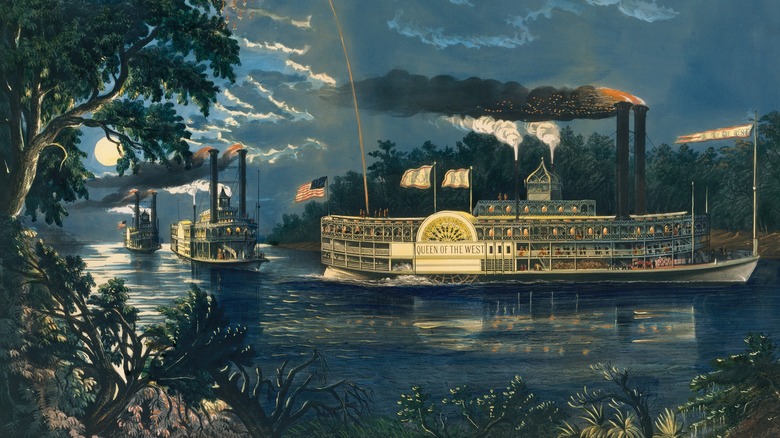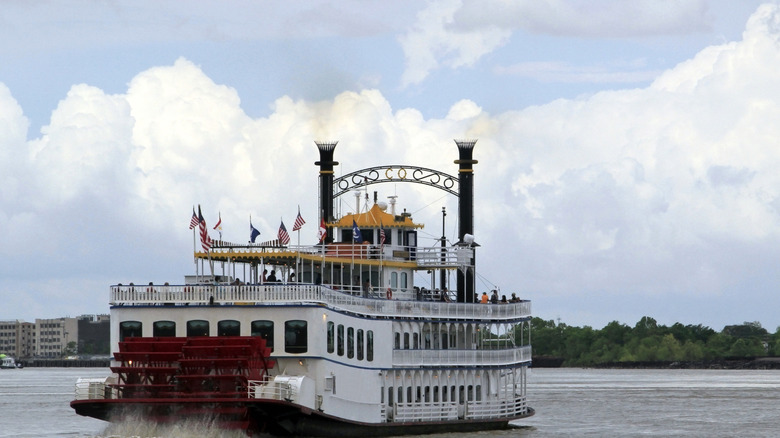The Truth Of The Floating Freedom School
The Mississippi River has harbored many legendary tales. Regarded as the longest river in North America, the Mississippi has played a vital role in trade and war, paving the way for industrialization and feeding the rich soil along its 2,340-mile stretch (via Britannica). What many might not know about the Mississippi River is how its waters once became an educational safe haven for African Americans fighting back against oppression. Unfortunately, this extraordinary story fell through the cracks of too many classroom history books.
The tale began in the late 1840's — a time when St. Louis legislators introduced an ordinance banning people of Black/African American descent from their right to an education (via Black Then). In order to ensure a proper education for all, Pastor John Berry Meachum and his formerly enslaved wife Mary Beachum responded with the "Floating Freedom School." This innovative solution took advantage of a legal loophole and went on to provide an education for hundreds of African Americans, rich and poor, slave and free.
The Floating Freedom School was a steamboat-turned-classroom
The legacy of the Floating Freedom School shows that not all civil rights battles were fought on land or with weapons. Herein lies one instance where the battle for education was fought by sea with sharpened pencils. It wasn't long before this resilient couple — Pastor John Berry Meachum and wife Mary Beachum — figured out that education could not be banned on the unregulated waters of the Mississippi River (via Black Then).
The steamboat classroom functioned just outside the jurisdiction of Missouri law enforcement officials, making it both legal and safe. This uniquely situated schoolhouse was not only safe but also affordable and available to all regardless of social status. Indeed, many inspiring minds were shaped in the hull of this humble vessel. One of the most famous of Meachum's pupils was James Milton Turner, who would go on to play an instrumental role in Missouri's Department of Education by establishing 30 new schools for African American students, including the Lincoln Institute (via Historic Missourians).

